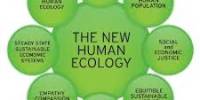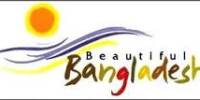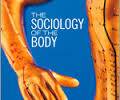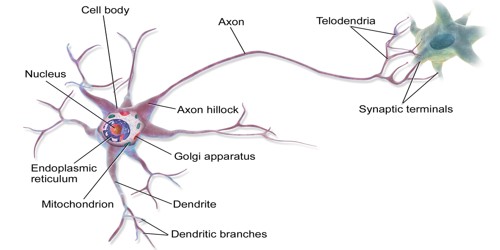Introduction:
Bangladesh has been perhaps the most important hearth on the globe for non-governmental organizations. Presently there are approximately 2000 NGOs working in Bangladesh. There are many types of NGOs here for different work approaches. But most of them focus on directly or indirectly poverty alleviation.
Non-Government Organizations (NGOs) have emerged as an integral part of the institutional structure for addressing poverty as well as rural development, gender equality, environmental conservation, disaster management, human rights and other social issues. The NGOs, in order to support social and economic empowerment of the poor, have vastly widened their activities to include group formation, micro credit, formal and non-formal education, training, health and nutrition, family planning and welfare, agriculture and related activities, water supply and sanitation human rights and advocacy, legal aid and other areas. These organizations mostly follow the target-group strategy under which the poor with similar socioeconomic interests are to achieve their objectives.
The Government of Bangladesh has created the NGO affairs bureau in 1990 under the Prime Minister’s Office. The Bureau enables the NGOs to obtain their registration clearance, approval and permission through a single agency of the Government within a specified time frame. The aim of the Bureau is to ensure quality performance of the NGO sector and its accountability to the state.
Non-governmental organizations (NGO) are legally constituted organizations created by local people or legal people that can operate independently in any form of government. The term originated by the United Nations, and normally refers to organizations that are not a part of a government and are not like conventional profitable businesses. In the cases in which NGOs are funded totally or partially by governments, the NGO maintains its non-governmental status by excluding government representatives from membership in the organization. The term is usually applied only to organizations that pursue wider social aims that have political aspects, but are not openly political organizations such as political parties.
One of the earliest mentions of the term “NGO” was in 1945, when the UN was created. The UN, which is an inter-governmental organization, made it possible for certain approved specialized international non-state agencies – or non-governmental organizations – to be awarded observer status at its assemblies and some of its meetings. Later the term became used more widely. Today, according to the UN, any kind of private organization that is independent from government control can be termed an “NGO”, provided it is not-profit, non-criminal and not simply an opposition political party.
NGOs are difficult to define and classify, and the term ‘NGO’ is not used consistently. As a result, there are many different classifications in use. The most common use a framework that includes orientation and level of operation. An NGO’s orientation refers to the type of activities it takes on. These activities might include human rights, environmental, or development work. An NGO’s level of operation indicates the scale at which an organization works, such as local, international or national. “Confronting the Classification Problem: Toward Taxonomy of NGOs”
Professor Peter Willetts, from the University of London, argues the definition of NGOs can be interpreted differently by various organizations and depending on a situation’s context. He defines an NGO as “”an independent voluntary association of people acting together on a continuous basis for some common purpose other than achieving government office, making money or illegal activities.
Professor Akira Iriye defines NGO as “a voluntary nonstate, nonprofit, nonreligious, and nonmilitary association.
“NGO’s are usually defined as an association of persons organized on voluntary basis through the initiative of one or more dedicated persons committed to the planning and implementation of development projects at the grass root level. NGO’s although work outside the government structure but they are within the legal framework of the country”.
Activities of NGO to Eradicate Rural Poverty by Humanitarian Progress and Structural Development of Organizations for Rural Poor, Employment Generation, Micro Credit, Targeting Poor Rural Women as Beneficiary, Relief and Rehabilitation Projects, Health, Nutrition and Hygiene, Informal and Non-formal Education.
One advantage of this NGO-led approach has been that social development has been broad-based, since NGOs primarily work with the poor and are effective in motivating them through social campaigns.
Activities undertaken to attract, develop and maintain an effective workforce within an organization. Edwin Flippo defies HRM as “planning, organizing, directing, controlling of procurement, development, compensation, integration, maintenance and separation of human resources to the end that individual, organizational and social objectives are achieved”.
The evolution of HRM can be traced back to Kautilya Artha Shastra where he recommends that government must take active interest in public and private enterprise. He says that government must provide a proper procedure for regulating employee and employee relation.
The international institute of personnel management and national institute of labor management were set up to look into problems faced by workers to provide solutions to them. The Second World War created awareness regarding workers rights and 1940’s to 1960’s saw the introduction of new technology to help workers.
The 1960’s extended the scope of human resource beyond welfare. Now it was a combination of welfare, industrial relation, administration together it was called personnel management. [5]
The process of defining HRM leads us to two different definitions. The first definition of HRM is that it is the process of managing people in organizations in a structured and thorough manner. This covers the fields of staffing (hiring people), retention of people, pay and perks setting and management, performance management, change management and taking care of exits from the company to round off the activities. This is the traditional definition of HRM which leads some experts to define it as a modern version of the Personnel Management function that was used earlier.
The second definition of HRM encompasses the management of people in organizations from a macro perspective i.e. managing people in the form of a collective relationship between management and employees. This approach focuses on the objectives and outcomes of the HRM function. What this means is that the HR function in contemporary organizations is concerned with the notions of people enabling, people development and a focus on making the “employment relationship” fulfilling for both the management and employees.
Human resource management is the management of the people who work in an organization. They can be managers, employees, project officers, field workers, coordinators. Since the organization is run by these people, they are considered to be a “resource” – ‘a human resource.’ Like NGO’s use funds to manage a project, NGO’s also need to use these ‘human resources’ or the ‘people’ to manage the organization.
It is not enough just to have a dedicated team for an organization. It is fundamentally believed that unless the team is not properly managed, motivated and performed, the organization will not achieve its goal and objectives.
The process of managing, motivating and making the staff perform involves setting up of systems, including building plans and policies. These systems fall under human resource management.
Programs of NGOs in Bangladesh:
There are almost 1798 NGOs registered under NGO Affairs Bureau (NGOAB) in Bangladesh (NGOAB: 2003). The trends and characteristics of programs are seemed very broad. The NGOs are rendering those services which are even given by the government. The programs are not only confined within the humanitarian and emergency relief help but also to organize local as well as initiatives like self-help projects, awareness raising, group formation, leadership, training in management skill (Edwards & Hulme 1992, 24 cited in Jamil:2000:147). This strategy seeks the ‘’empowerment’’ of people which means ‘’the process of assisting disadvantaged individuals and groups to gain greater control than they presently have over local and national decision making and resources, and of their ability and right to define collective goals, make decisions and learn from experience’’
The NGO directory published by NGOAB (Non Governmental Organization’s Affairs Bureau) in listed all the 1798 NGO’s and their main programs. It is found that all the listed NGO’s have the following programs: education-Primary mass education, adult literacy, vocational training; health care programs including hospital services, drug addiction, anti smoking, disability (physical and mental), HIV/AIDS, family planning, mother and child immunization; legal aid; awareness building; violence against women; women development; income generation through micro credit and training, human rights, social welfare through orphanage, micro credit, water and sanitation, relief and rehabilitation, agricultural development programs , arsenic mitigation, religious programs, labor law, youth development, disaster management, land reform, child care, rural development, social forestry, fisheries and livestock, poultry, handicraft, environment, local resource mobilization, poverty alleviation, election monitoring etc. This list covers almost 30 types of programs conducted by different national, local and international NGOs in Bangladesh
Anu Muhammad (1998, cited in Newaz: 2003) has identified some features of the NGOs’ activities and functions in Bangladesh. These are:
- Relief activities, Health and Family Planning activities and education activities:
- Agriculture activities:
- Non-agriculture activities:
- Credit and savings related activities
- Consciousness raising activities:
- Skills development and productivity enhancement
Conclusions:
The eight Millennium Development Goals (MDGs) – which range from halving extreme poverty to halting the spread of HIV/AIDS and providing universal primary education promote gender equality and empower women, reduce child mortality, improve maternal health, ensure environmental sustainability, develop a global partnership for development all by the target date of 2015 – form a blueprint agreed to by all the world’s countries and all the world’s leading development institutions. They have galvanized unprecedented efforts to meet the needs of the worlds poorest. These MDGs have been considering as the pivot of developing in the world as well as in Bangladesh centering poverty reduction. In Bangladesh all development activities as well as programs of government (GOB) and NGOs are projecting in line with MDGs.
















